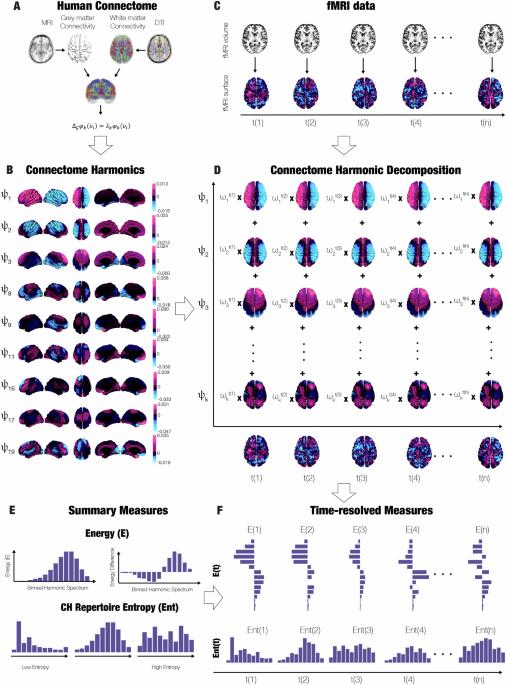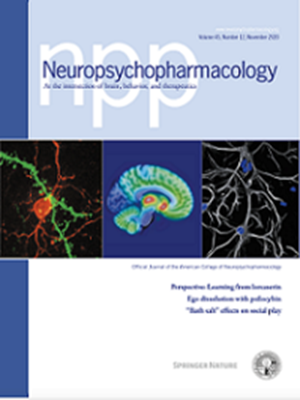N,N-dimethyltryptamine effects on connectome harmonics, subjective experience and comparative psychedelic experiences
IF 6.6
1区 医学
Q1 NEUROSCIENCES
引用次数: 0
Abstract
Exploring the intricate relationship between brain’s structure and function, and how this affects subjective experience is a fundamental pursuit in neuroscience. Psychedelic substances offer a unique insight into the influences of specific neurotransmitter systems on perception, cognition and consciousness. Specifically, their impact on brain function propagates across the structural connectome — a network of white matter pathways linking different regions. To comprehensively grasp the effects of psychedelic compounds on brain function, we used a theoretically rigorous framework known as connectome harmonic decomposition. This framework provides a robust method to characterize how brain function intricately depends on the organized network structure of the human connectome. We show that the connectome harmonic repertoire under N,N-dimethyltryptamine (DMT) is reshaped in line with other reported psychedelic compounds - psilocybin, lysergic acid diethylamide (LSD) and ketamine. Furthermore, we show that the repertoire entropy of connectome harmonics increases under DMT, as with those other psychedelics. Importantly, we demonstrate for the first time that measures of energy spectrum difference and repertoire entropy of connectome harmonics index the intensity of subjective experience of the participants in a time-resolved manner reflecting close coupling between connectome harmonics and subjective experience.

N,N-二甲基色胺对连接体谐波、主观体验和比较迷幻体验的影响。
探索大脑结构和功能之间的复杂关系,以及这种关系如何影响主观体验,是神经科学的一个基本追求。致幻剂为研究特定神经递质系统对感知、认知和意识的影响提供了独特的视角。具体来说,它们对大脑功能的影响通过结构连接组传播——一个连接不同区域的白质通路网络。为了全面掌握迷幻化合物对大脑功能的影响,我们使用了一个理论上严格的框架,即连接组谐波分解。这个框架提供了一个强大的方法来描述大脑功能如何复杂地依赖于人类连接组的有组织的网络结构。我们发现,在N,N-二甲基色胺(DMT)作用下,连接组谐波库与其他报道的迷幻化合物——裸盖菇素、麦角酸二乙胺(LSD)和氯胺酮——的重塑一致。此外,我们发现DMT与其他迷幻药一样,连接组谐波的保留熵增加。重要的是,我们首次证明了连接组谐波的能量谱差和曲目熵以时间分辨的方式衡量参与者的主观经验强度,反映了连接组谐波和主观经验之间的密切耦合。
本文章由计算机程序翻译,如有差异,请以英文原文为准。
求助全文
约1分钟内获得全文
求助全文
来源期刊

Neuropsychopharmacology
医学-精神病学
CiteScore
15.00
自引率
2.60%
发文量
240
审稿时长
2 months
期刊介绍:
Neuropsychopharmacology is a reputable international scientific journal that serves as the official publication of the American College of Neuropsychopharmacology (ACNP). The journal's primary focus is on research that enhances our knowledge of the brain and behavior, with a particular emphasis on the molecular, cellular, physiological, and psychological aspects of substances that affect the central nervous system (CNS). It also aims to identify new molecular targets for the development of future drugs.
The journal prioritizes original research reports, but it also welcomes mini-reviews and perspectives, which are often solicited by the editorial office. These types of articles provide valuable insights and syntheses of current research trends and future directions in the field of neuroscience and pharmacology.
 求助内容:
求助内容: 应助结果提醒方式:
应助结果提醒方式:


